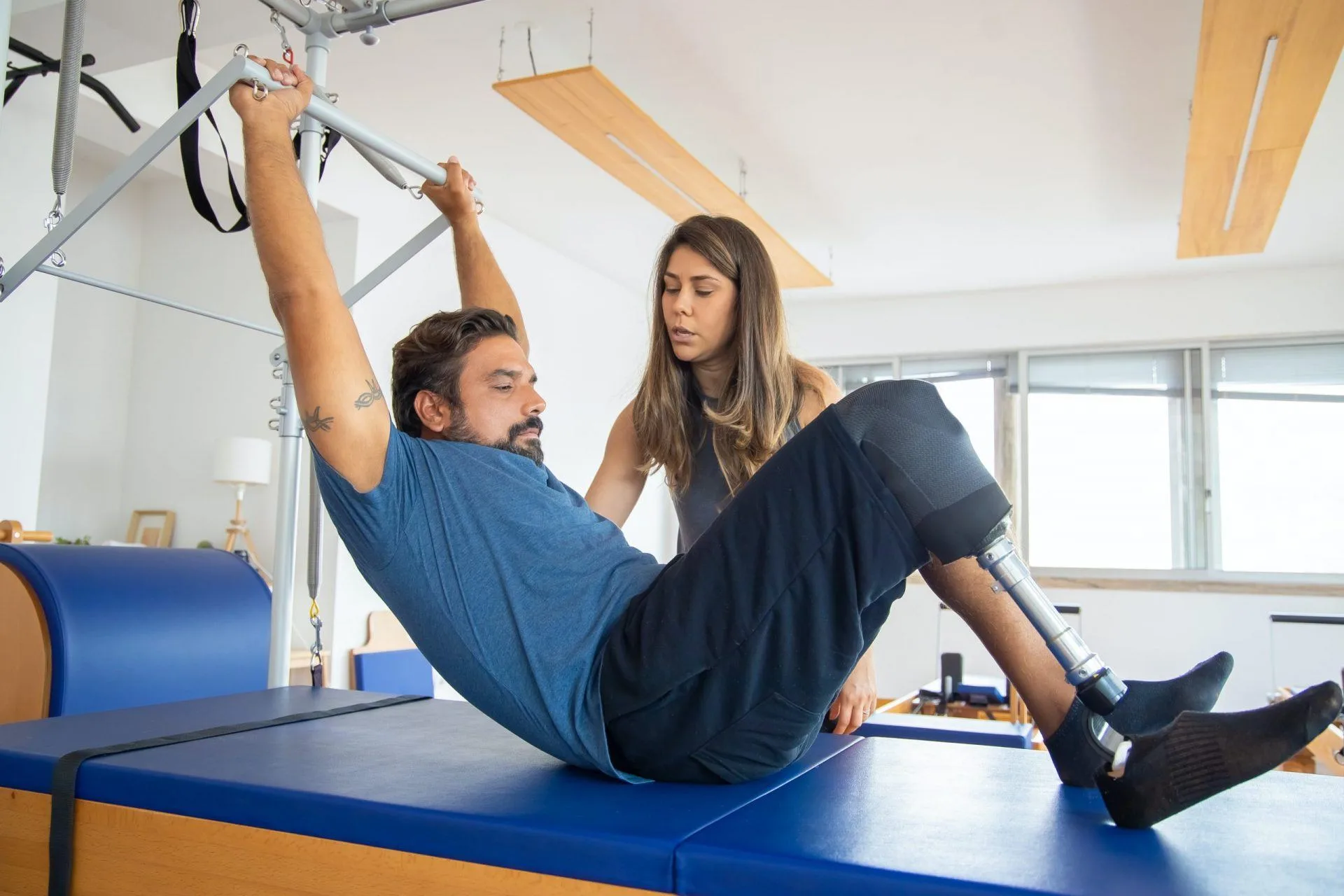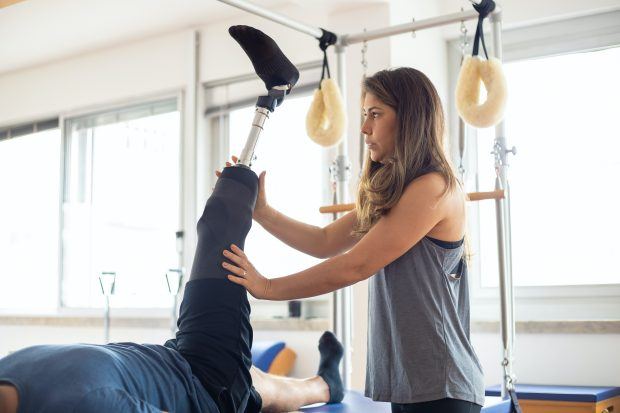Most of us have a working knowledge of physical therapy. It is a collection of activities that aid in recovery after surgery. It is often associated with alleviating pain, strengthening weak muscles, and increasing joint mobility.
Reaching these goals involves a series of steps. The patient’s present physical condition is assessed first, followed by a more detailed examination of essential physiological specifics such as joint mobility and limb strength.
That being said, let’s discuss why you should use physical therapy techniques and how it helps with recovery.
Understanding Physical Therapy
- After evaluating the situation, the physical therapist must consult with the patient and physician to decide the desired result. Then a strategy is developed tailored to the patient’s unique requirements.
- Physical therapy can assist individuals of all ages to regain mobility or improve function after various accidents and diseases. The primary goal of physical therapy is to restore a person’s ability to do daily tasks without difficulty or discomfort.
- If you have sustained an injury, a physical therapist (PT) can create a customized program and work with you to help you reclaim your strength, flexibility, and range of motion.
- The therapist can recommend and demonstrate other therapies such as aquatic therapy, acupuncture, and particular therapeutic exercises and stretches.
- A physical therapist can assist you in identifying activities and lifestyle modifications that can help you improve general health and avoid future injuries.
- To get proper care and therapy, you need to find a suitable therapy center. There are quite a few of them, all across the US. Let’s say you are from Kansas, Oklahoma, or Colorado and are looking for a nearby therapy center. You can opt for a PT center like Fick Physical Therapy and Sports Performance. They provide customized support and care to safely and quickly help you recover from an injury.
- For example, consider the following scenario. You have sustained a sports injury. A physical therapist can create an appropriate training program to assist you in returning to your active life safely and swiftly. It will also prevent you from injuring that portion of your body again.

Photo by Conscious Design on Unsplash
Physical Therapy Techniques
Therapists use a variety of therapy strategies to accomplish their goals, which include the following:
Cupping
This method can increase blood flow and encourage recovery by decompressing the soft tissue directly under the skin. This is an age-old practice that has received popularity among health care experts in recent years.
Light Therapy
Applying infrared light to afflicted regions has boosted DNA, ATP, and collagen formation, which are essential for healing. This technique has been used to treat rheumatoid arthritis, carpal tunnel syndrome, and various other types of discomfort.
Robotics
Is one of the most sophisticated technologies to enter physical therapy.
For example, physical therapists no longer need to physically manipulate patients’ limbs when using robotic treadmills and exoskeletons.
Additionally, this technology can detect and compensate for minute changes in the patient’s movement.
Strength Training
The most closely linked aspect of physical therapy is these strength-building activities that revitalize atrophied muscles.
However, in recent years, an increased focus has been placed on developing muscular strength across the body to increase functioning.
Traction
Is simply releasing pressure on the spine to treat diseases such as sciatica, herniated discs, and pinched nerves. Traction can relieve pain, straighten the spine, and promote healing without surgery.
Ultrasound
This technique has been a mainstay of physical therapy for decades. A high-frequency sound emitter is inserted on a problem region, such as a recovering fracture or plantar fasciitis. The high-intensity sound waves heat the tissue, promoting blood flow and accelerating healing.
How Therapies Can Help the Recovery Process
Here is how physical therapies can assist you with recovery.
Pain Management
People often endure persistent pain when an injury does not heal correctly. Unfortunately, this results in many patients seeking pain relief via over-the-counter pain medicines or even prescribed opioids.
Photo by Kampus Production: https://www.pexels.com/photo/a-woman-lifting-a-man-s-prosthetic-leg-6111588/
In contrast, physical therapy restores blood flow to affected areas via ultrasonography, electrical stimulation, and hands-on approaches.
This enhances tissue function and dramatically decreases patients’ pain perceptions. As a result, the dependence on pharmacological pain treatment measures lessens.
Improves Functional Abilities
After surgery or an accident, your range of motion is likely to get restricted. Unfortunately, many patients experience worry and frustration due to these functional constraints.
On your initial appointment, a physical therapist will do a complete examination to establish your capacity to perform daily activities. They will then collaborate with you to establish treatment goals.
Whether walking without a cane or resuming a sport, your physical therapist can assist you in resuming the everyday activities that you like.
Getting Help To Avoid Surgery
If you have sustained an injury, you must get an adequate assessment. In certain instances, your tissue can be irreversibly destroyed and in need of surgery.
However, in certain circumstances, physical therapy should be attempted first. It is less intrusive and can prevent the need for more surgery in the future.
Helps With Stroke Recovery

Photo by SHVETS production
Following a stroke, it is usual to have some loss of function and mobility. Physical therapy aids in the strengthening of weak body components and the improvement of gait and balance.
Physical therapy can help stroke patients improve their mobility. Allowing them to be more independent around the house and alleviate their caregiver load for bathroom visits, bathing, dressing, and other daily living chores.
Recover From A Sports Injury
Physical therapists are aware of how certain sports can cause particular types of injuries. Some sports injuries can be very challenging to recover from. But with proper technique, you can recover from those injuries, without needing extra medication or operation.
Therefore, they can assist you in developing proper rehabilitation or preventative exercise regimens to guarantee a safe return to your sport.
Improve Balance
When you begin physical therapy, you will undergo a fall risk assessment. For example, suppose you are at a high risk of falling down. In such instances, therapists prescribe activities that gently and safely test your balance to simulate real-world conditions.
Additionally, therapists assist you with coordination training and gadgets that aid you in making safer movements.
Manage Diabetes and Vascular Conditions
When combined with other diabetes treatment strategies, exercise can aid in successfully controlling blood sugar. Additionally, patients with diabetes can have difficulties with their feet and the sensation in their legs.
Therefore, physical therapy can assist in providing and educating these patients about adequate foot care to avoid future complications.
Age-Related Issues
Older individuals may have arthritis, osteoporosis, or maybe in need of joint replacement. Physical therapists are experienced in assisting patients with joint replacement recovery and conservative management of arthritic or osteoporotic disorders. They can also give you the right home workout regimen to help you recover fast.
Manage Heart and Lung Disease
While patients can get cardiac rehabilitation after a heart attack or treatment, they can also receive physical therapy if their everyday functioning is compromised.
Physical therapy can help patients with pulmonary difficulties by improving their quality of life through strengthening and conditioning their respiratory organs.
Certain training including breathing exercises is used to assist patients in clearing fluid from their lungs.
Women’s Health and Other Conditions
Women have unique health challenges, including pregnancy and postpartum care. Physical therapists can provide specialized care for women’s health issues.
Additionally, physical therapy can manage urinary incontinence, constipation, breast cancer, fibromyalgia, lymphedema, pelvic discomfort, and many other health issues.
Helps Prevent Future Injury
One of the most significant advantages of physical therapy is that it can aid in the prevention of future injury. When an injury does not heal correctly, lingering pain and joint stiffness can occur.
Once a muscle or joint is damaged, it never returns to its pre-injury state. This increases your risk of re-injuring that body part. Because physical therapy promotes normal recovery, it decreases the likelihood of future injury.
Eliminate Headaches
Are you constantly tormented by annoying headaches? Physical therapy can assist you in reducing them via the use of particular workouts and therapeutic approaches.
On the other hand, you have come to the right place if you are seeking natural cures.
Surprisingly, many headaches are caused by anomalies in the upper cervical spine’s joints and muscles. By strengthening the deep stabilizers in your neck and loosening tight muscles, you can experience significant relief from headaches.
Makes You Stronger
Who among us does not want to be stronger? This is something we can all appreciate. Every day, we depend on physical strength. However, physical therapy can be beneficial if you discover that you have lost some formative strength.
Physical therapy can transform your upper body strength with resistance training, functional exercises, and complex motions.
Eliminate Vertigo
Dizziness and vertigo make many people’s lives difficult. However, if you suffer from vertigo regularly, you understand how debilitating and inconvenient it can be.
Without a doubt, vertigo is a significant disability. On the other hand, physical therapy uses particular motions and exercises to realign the components of your inner ear. As a consequence, you will be able to stand without the fear of vertigo.
Increase Flexibility
Do you struggle with a lack of flexibility? Are you having difficulty with yoga poses? Physical therapy would be ideal for you.
Typically, restricted flexibility is caused by stiff joints, tight muscles, and other reasons. Physical therapy will remove the impediments to flexibility and mobility.
Improve Your Posture
Has someone ever told you to sit straighter? If this is a regular remark, you should see a physical therapist. In essence, physical therapy can assess the severity of your posture and identify the underlying cause.
Finally, they will devise a strategy for resolving the issue and guide you through the appropriate activities. As a consequence, you will notice an improvement in your posture.
Conclusion
Individuals with specific injuries, impairments, or other health concerns can benefit from physical therapy. You should consult with a physical therapist or another healthcare expert if you have other medical conditions. Best of luck!




![women [longevity live]](https://longevitylive.com/wp-content/uploads/2020/01/photo-of-women-walking-down-the-street-1116984-100x100.jpg)










